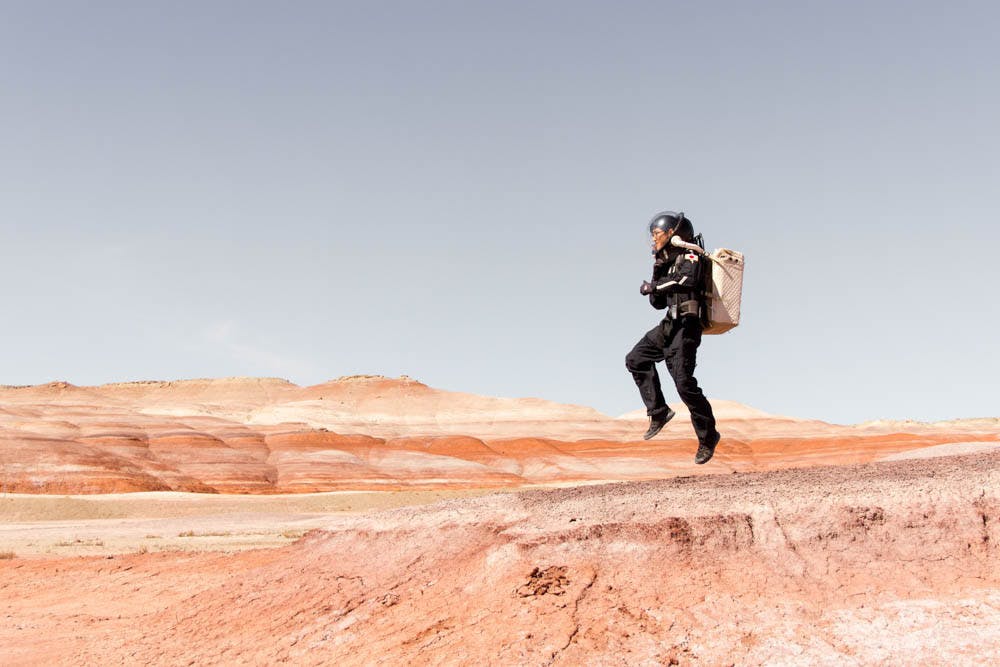“One of my goals throughout my whole life (has been) to literally walk on another planet,” said Connor Lynch ’17. “It’s what I’ve always wanted to do.”
Rather than a pipe dream, Lynch’s aspirations of becoming an astronaut are not so distant from reality. Lynch was recently accepted by the Mars Society to live and work in the Utah Desert for two weeks at the Mars Desert Research Station, a full simulation of life on Mars. The facility exists for scientists, engineers and students to perform experiments that inform human travel to Mars, a goal NASA hopes to accomplish in the 2030s.
“It’s pretty exciting because the research we do will be used by NASA … to learn more about what it’s like being on the surface,” Lynch said.
Lynch’s research proposal focused on the use of time-lapse photography to capture the changes in Utah’s landscape. Lynch also proposed building meteorological stations that could capture moisture, soil temperature, wind speed, humidity and other environmental features. Lynch will modify his plan in the 10 months leading up to his stay to incorporate the realities of the program’s restricted power supply and lack of Internet as well as the desert’s limited resources.
As a research assistant to Jim Head, professor of the geological sciences, Lynch has worked on Antarctic time-lapse photography and meteorological station research.
“Connor is an integral part of our group,” Head said. “This opportunity to go to the desert station of the Mars Society is really important for the future of Mars. … Being there makes you see connections, makes you appreciate things we take for granted otherwise” such as finger dexterity, which is limited when wearing a spacesuit, or breathable air, Head said.
As an astrophysics concentrator, Lynch will not only do the geological work his proposal outlined but also assist the astronomer on his crew with observatory research. Conclusions from the astronomy and geology research will hopefully be published after the two-week trip to MDRS.
“The information we’ll gain from this experience will hopefully be used to better prepare people that do go to Mars,” Lynch said. “It’d be awesome if I could be one of those people, but, even if I’m not, it’s cool knowing that we (would have) contributed to that.”
Lynch applied to MDRS through the Students for the Exploration and Development of Space, a national organization that “empowers young people to participate and make an impact in space exploration,” according to the SEDS website.
The group solicited applications from graduate and undergraduate students, eventually accepting applicants from across six universities to study at MDRS for the two-week seminar.
Students founded a SEDS chapter on campus last semester with the goal of “bring(ing) together a diverse array of students interested in space” beyond the traditional realm of engineers, physicists, geologists and astronomers, said Eliott Rosenberg ’17, co-vice president of SEDS at Brown. The chapter aims to incorporate other fields like public policy and economics — both areas that will heavily impact what space exploration looks like in 50 years.
Mars colonization, though not a goal of the SEDS national organization, is an interest shared by many SEDS members at Brown. As one of the closest planets to Earth and Earth’s closest relative in the solar system, Mars presents a unique opportunity to learn more about ourselves and even an opportunity for long-term human survival outside Earth, said Joe Fichera ’17, the other co-vice president of SEDS at Brown.
“We’ve been able to learn about the Earth through studying other planets,” Lynch said. “Humans are curious by their nature, and we want to discover as much as we can and expand the frontier of human knowledge. … I think it’s mankind’s destiny to go to other planets.”





